As an Amazon Associate, I earn from qualifying purchases. In addition, I participate in several other affiliate programs that allow me to earn while I recommend products I love.
Suppose you’re cooking a recipe and realize you need a substitute for mushrooms.
Thankfully, there are many delicious replacements that all have something different to offer your meal.
Mushrooms also come with a myriad of health benefits.
This low calorie fungus is packed with vitamins and minerals, such as vitamins D, B, copper, and potassium, and is also a source of antioxidants!
As part of a balanced healthy diet, it’s ideal to look for veggie substitutes that are also nutritious.
There are so many recipes that call for mushrooms!
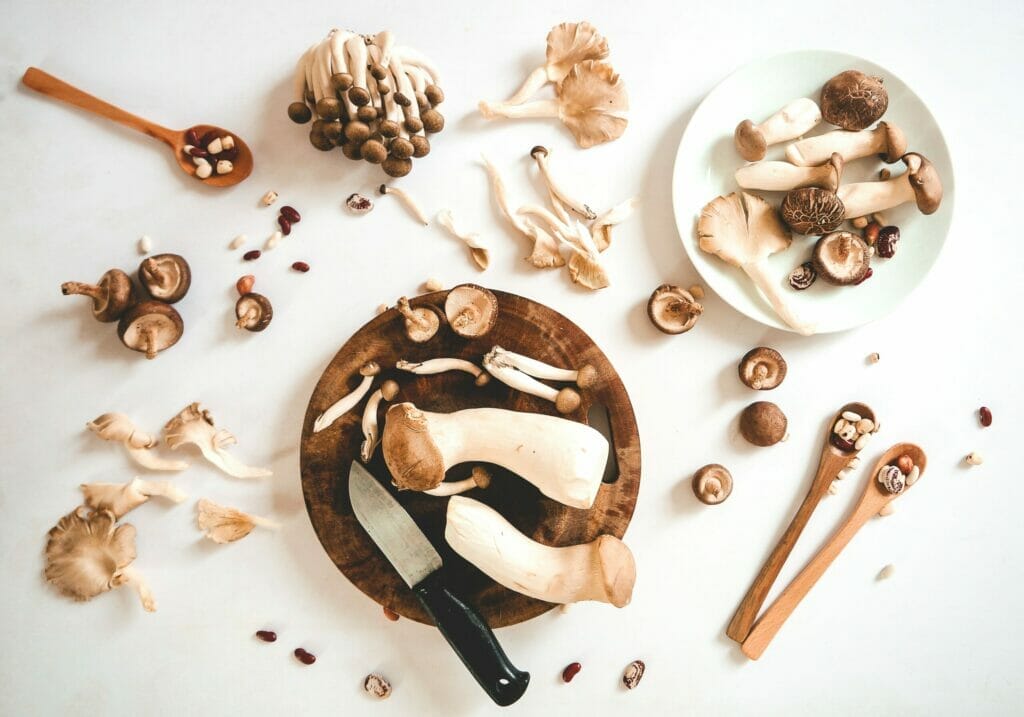
From pasta and pizzas to stir fries and stroganoffs, there’s a vast range of dishes in which mushrooms make the perfect addition.
They’re also commonly used in vegan and vegetarian recipes, whether it’s as the main texture, to add bulk, or as an extra yummy ingredient.
The fleshy, dense, meaty texture of mushrooms is distinctive.
It can work as a surprisingly good substitute for cut-up meat or squid.
When mushrooms are cut up small, they can make an excellent alternative to mince in tacos and pasta.
So if you’re used to using them stir-fried or grilled, as you can see, a whole range of recipes may need a mushroom replacement!
Flavour-wise, mushrooms somehow manage to be very distinctive yet also versatile!
Their flavor profile is ‘umami’ – a rich, meaty, and savory taste that is also the fifth core taste.
Despite this, they still work well in nearly all cuisines and take on flavors well.
All these factors make the humble mushroom seem incredibly unique, and there’s a lot to consider when investigating what to use instead of mushrooms.
Whether you’ve discovered you don’t have any mushrooms at the last minute, are allergic, or simply don’t like them, the best substitutes will offer something similar in texture or flavor.
These options won’t leave your recipe feeling like it’s lacking anything.
Our Favorite Quirky Kitchen Gadgets
- Select-A-Spice Auto-Measure Carousel – Get your exact spice amount without measuring spoons with this spice carousel. Simply twist the dial for a perfect 1/4 teaspoon measurement!
- Silicone Utensil Rest with Drip Pad – This utensil rest keeps my countertops neat & drip-free!
- Snap N Strain Pot Strainer and Pasta Strainer – I love this strainer because it fits on all pots and pans while also being compact and easy to use!
- Herb Scissors Set – I use these scissors to cut and mince fresh herbs directly into any dish without the tedious work of cutting each herb or dirtying up a cutting board.
- Knife Sharpener – I love how quirky and nifty this rhino shaped knife sharpener is. It definitely puts the FUN in functional!
19 Easy Mushroom Substitutes
1. Artichoke hearts

Artichoke hearts have a mild yet deliciously earthy, nutty flavor that makes them a great addition to many recipes.
In addition, their soft yet fleshy texture resembles mushrooms, so they’re an excellent substitute for mushrooms when you want to mimic that mildly meaty consistency.
They work well in Mediterranean dishes, especially Italian ones.
Like mushrooms, artichoke hearts are also a source of Vitamin D and folate while containing Vitamin A, calcium, and iron.
Combining artichoke hearts with other healthy veggies and sprinkling them on top of pizza is a great way to add extra nutrition/
2. Eggplant
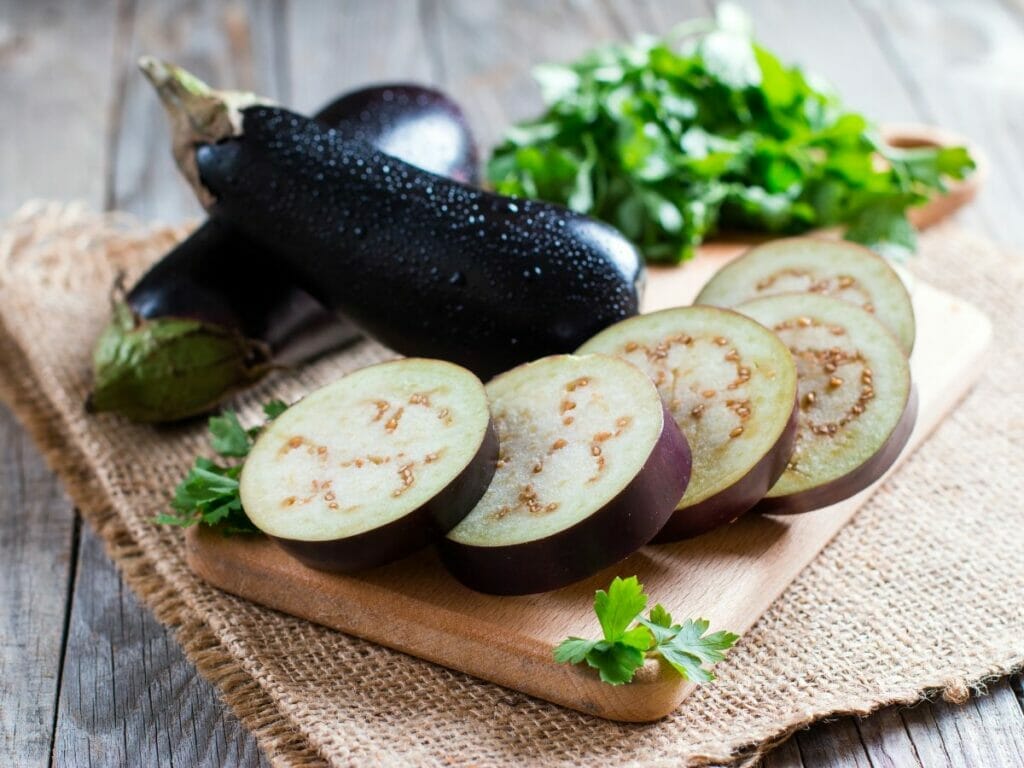
Like artichoke hearts, eggplant is one of the closest substitutes for mushrooms in terms of texture.
It’s soft, fleshy, and tastes delicious when grilled.
So eggplant is a good choice if you’re wondering what to swap for mushrooms without losing that juicy texture.
Unlike mushrooms, eggplant doesn’t retain its texture when cooked in liquids, such as broths and soups.
So be careful not to overcook eggplant or cook it separately and add it at the end.
Eggplants and mushrooms have some nutrients in common since they’re both packed with antioxidants and copper.
Eggplants are also a good source of manganese, thiamine, and fiber.
3. Squash
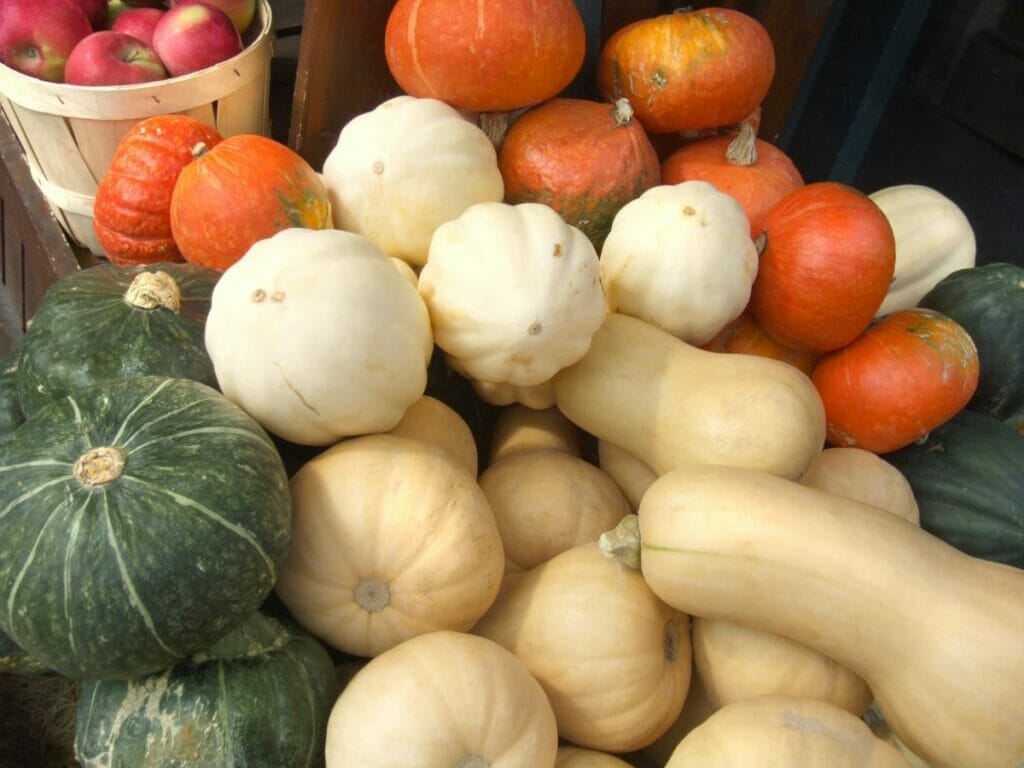
Squash is a flavorsome addition to many dishes!
While butternut squashes and pumpkins are sweeter than mushrooms, they are also earthy and, like mushrooms, marinate well with other flavors.
Squash can be sliced into a stir-fry dish, blended into a risotto or pasta sauce, or cubed and roasted in oven dishes or salad toppings.
They also add a great contrasting taste to spicy curries, especially in coconut milk-based dishes.
The sweet flavor of squash tastes delicious alongside chili and a splash of lime.
Better yet, most squash varieties are a good source of magnesium, calcium, iron, Vitamin A, and B6.
4. Tempeh
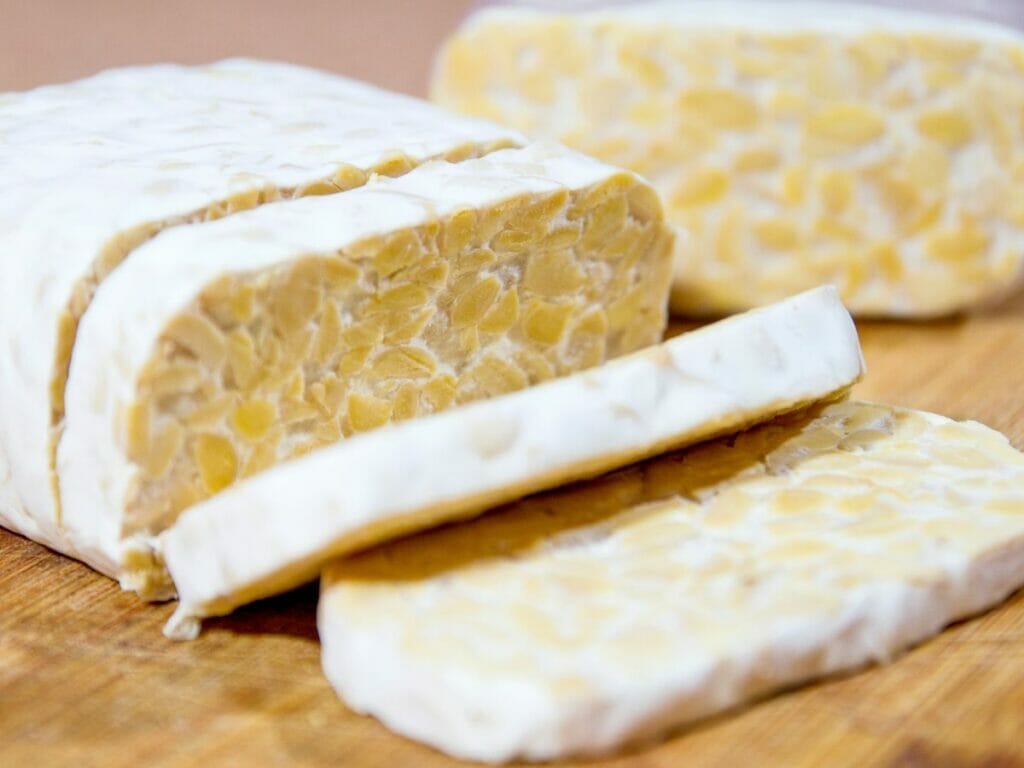
Tempeh is known for its nutty flavor and chewy texture.
This high-protein product is prevalent in Asian dishes, such as stir-fries and curries.
You can also thinly slice tempeh and then bake or fry it, which makes a delicious side to salads or sandwiches.
Tempeh is also one of the most nutrient-dense replacements.
Since tempeh is made from fermented soybeans, which are later pressed into this dense form, it’s no surprise they’re a staple for vegans and vegetarians.
Not only is tempeh high in protein, but it’s also a source of iron, calcium, niacin, magnesium, manganese, and phosphorus.
Better yet, fermented foods are also a source of probiotics.
These health benefits make it a perfect addition to a balanced diet.
5. Heart of palm
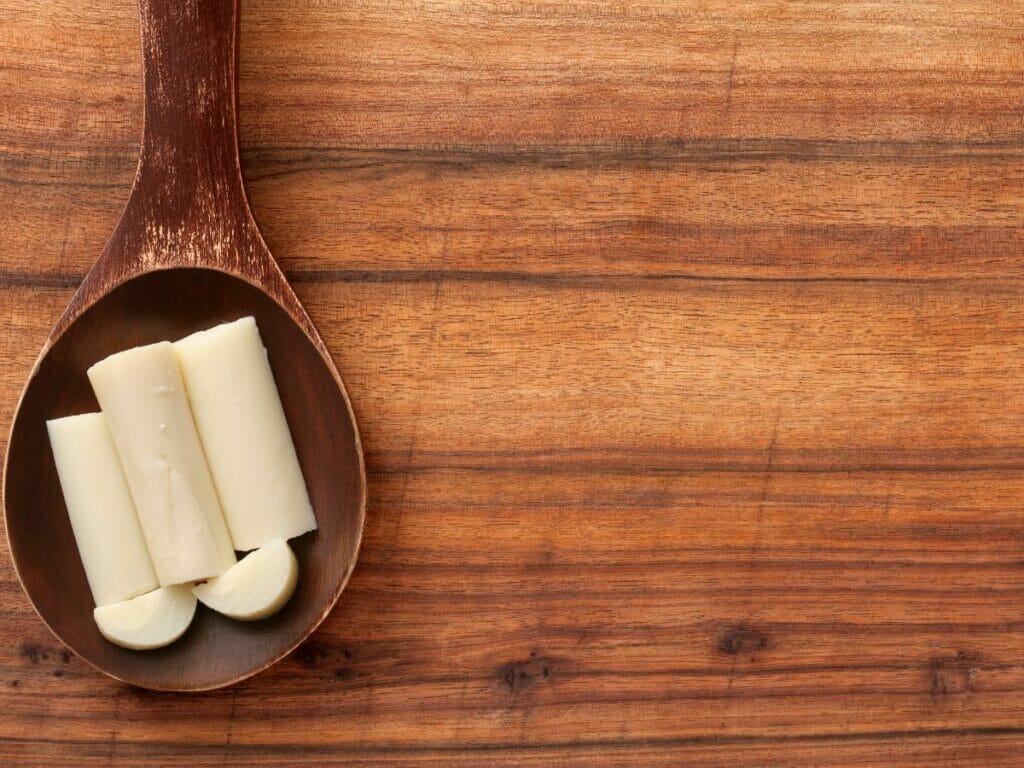
Heart of palm is one of the less obvious mushroom replacements.
Still, it’s got a superb meaty consistency and earthiness that resembles mushrooms quite well.
They’re a suitable replacement for mushrooms in salads and pasta dishes.
You can also use hearts of palm as a topping in burgers and tacos.
Hearts of palm are a great low-fat ingredient that includes all essential amino acids, making it a complete protein.
It’s also fiber-rich and a good source of several minerals, including zinc, iron, folate, and copper.
6. Brown rice
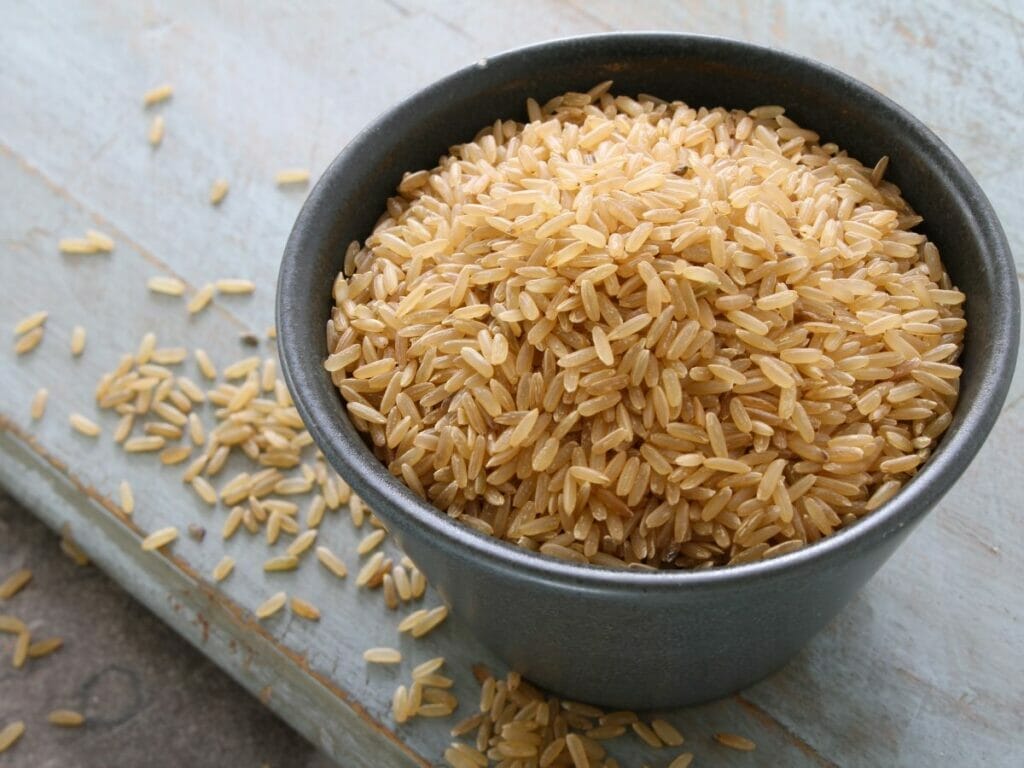
Brown rice is a great way to add bulk to many dishes – it’s healthy and takes on the flavor of your seasonings.
Brown rice adds a similar consistency to dishes as mushrooms, so it works well in recipes like stews and soups.
Brown rice will work particularly well as a substitute for shredded mushrooms due to the size of the individual grains.
This humble grain will also keep your heart happy since it’s rich in dietary fiber and magnesium.
7. Lentils
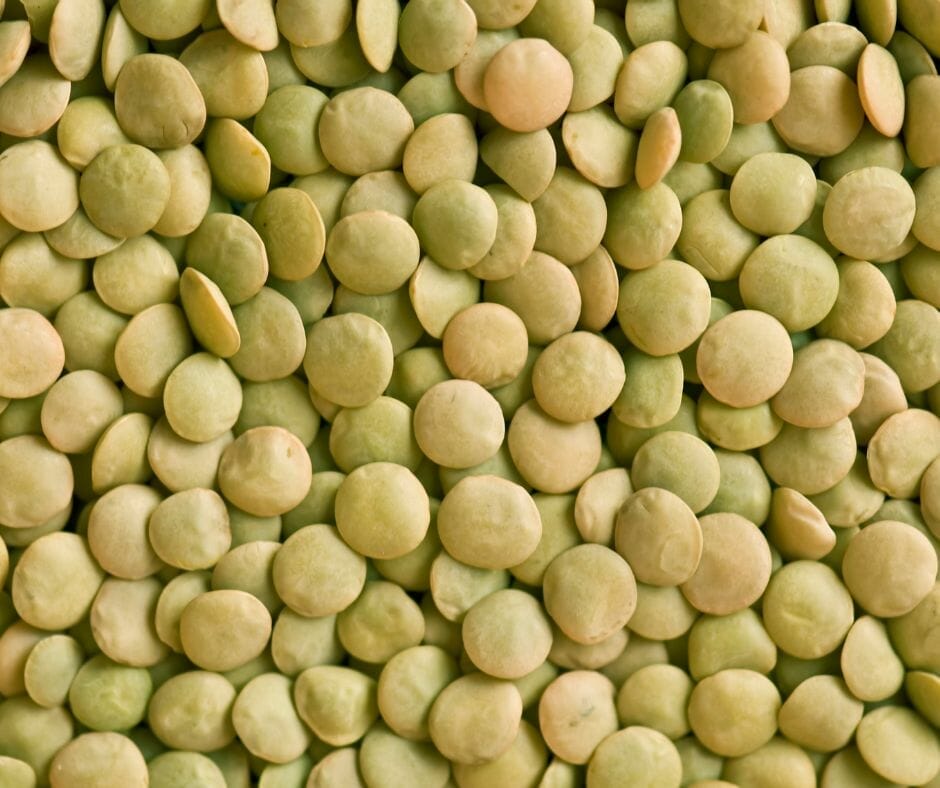
Lentils are an easy addition to many dishes but work best in soups, stews, or even lentil bolognese.
They’re a healthy, protein-packed [grain] that makes them a great way to add bulk to a dish.
They’re also a common component of many traditional curry dishes, such as lentil dahls.
However, you will have to treat them very differently from mushrooms when adding them to your meal.
You can buy lentils dry or soaked in cans.
It’s a popular staple for healthy, plant-based protein options since a third of its calories come from protein.
Lentils are also high in prebiotic fiber, folate, iron, and potassium, making them another terrific staple for heart health and lowering cholesterol.
8. Walnuts
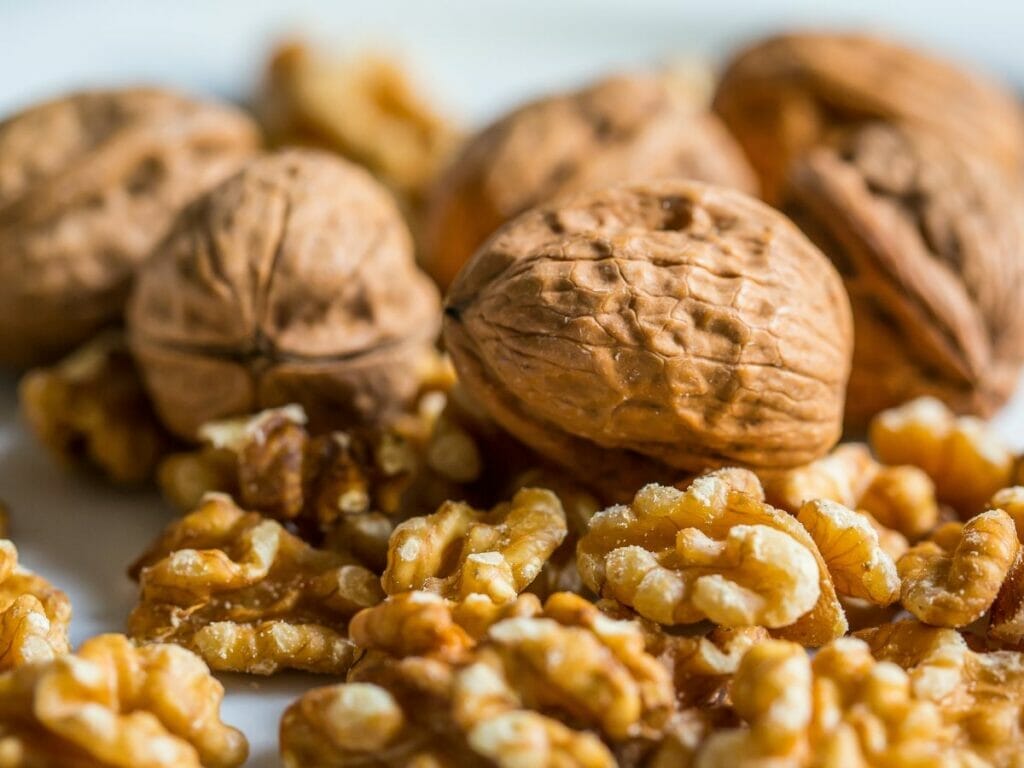
Walnuts and mushrooms are popular ingredients in vegetarian recipes, with mushrooms taking on the flavor of many seasonings and walnut having a convincingly meaty texture.
If you’re familiar with cooking mushrooms in a vegetarian meal for friends, why not experiment using walnuts instead?
You can chop walnuts into small pieces to make walnut mince for bolognese and tacos or combine it with other flavors to make meatless burger patties.
Walnuts are a healthy source of fat and have more omega-3 fats than any other everyday nut.
Additionally, they contain many necessary vitamins.
They are a great source of fiber and protein and are rich in antioxidants.
9. Cashews
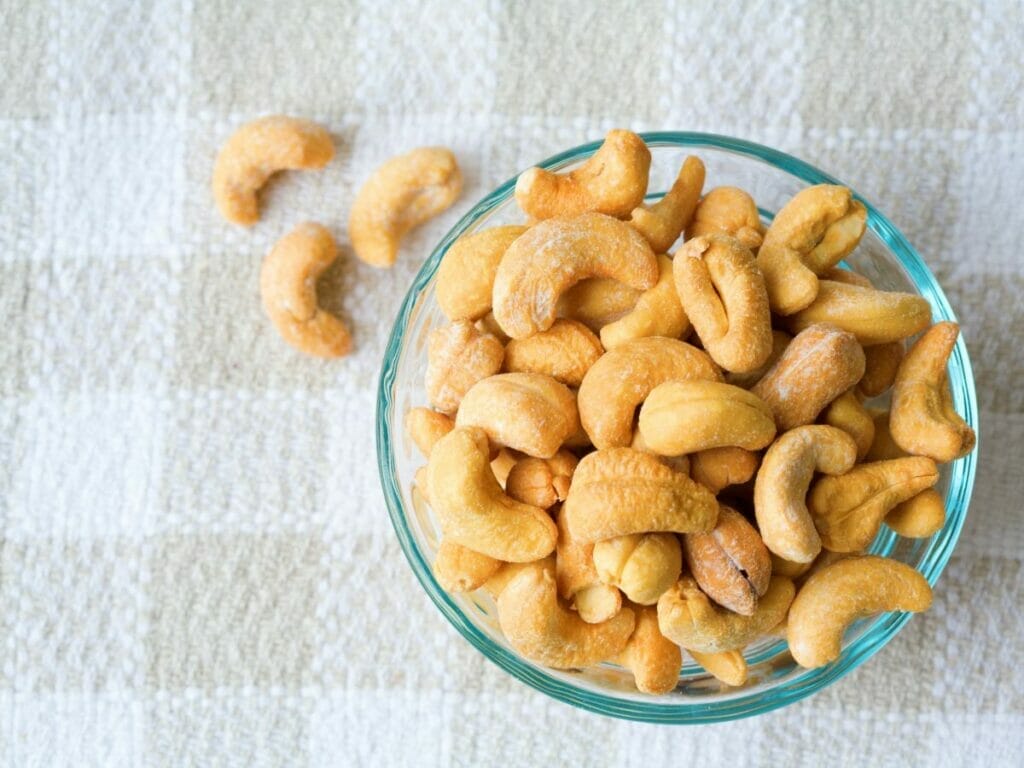
Cashews are delicious in stir fries, though there are many inventive ways to add this versatile nut to your meal.
For example, you can blend cashews to make a creamy pasta sauce instead of making a mushroom-based pasta dish.
Like most nuts, cashews are a good source of fiber, healthy fats, and protein – all of which we need as part of a balanced diet.
Cashews also contain copper, magnesium, and manganese.
10. Olive tapenade

Olives have a similar texture to mushrooms, and flavor-wise they have a similar earthy quality.
However, olives are saltier than mushrooms, so consider that before adding extra salt to a dish that already has olives!
Olives are the perfect mushroom substitutes in many Mediterranean dishes!
They taste delicious in pasta, on pizza, or chopped into a salad.
Tapenade is a good source of iron, iodine, antioxidants, and fiber.
Olives are also a heart-healthy fat and are a staple in many Mediterranean regions known for their healthy elderly populations.
11. Caramelized onion
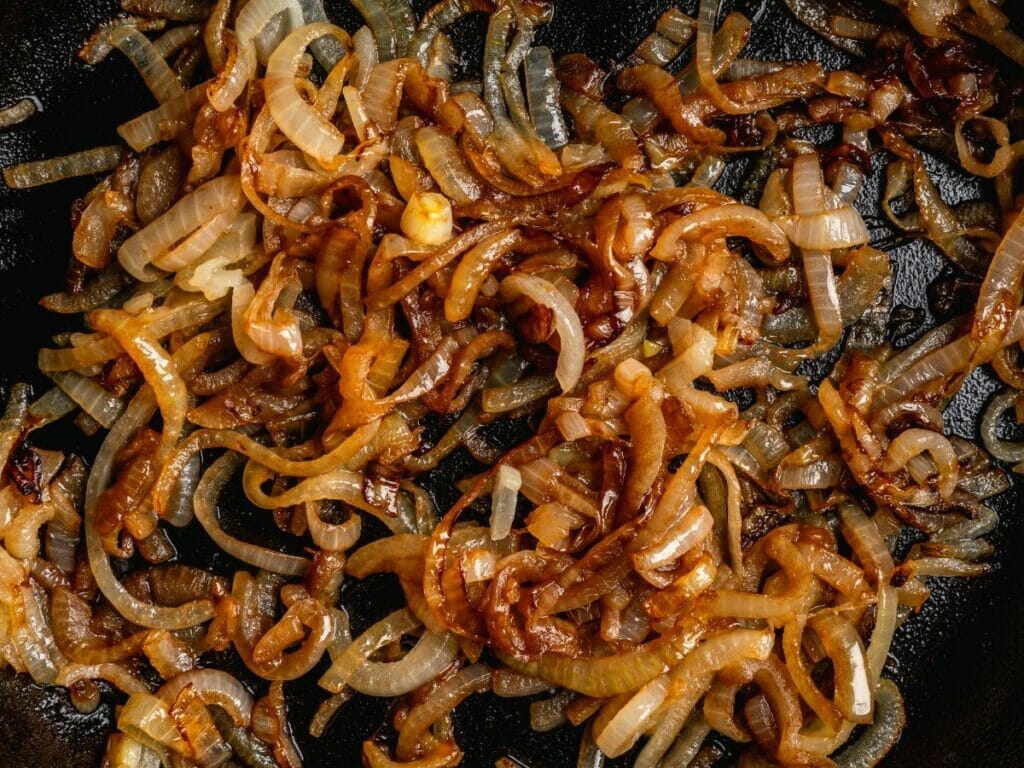
Caramelized onion is a delicious topping to add to burgers, sandwiches, and pizzas.
But once you’ve tried it, it’s hard to go back!
This is one of our favorite mushroom substitutes.
Onions are a low-calorie staple packed with vitamins, minerals, and fiber.
Thankfully, this delicious topping should be able to maintain all that good nutritious value – look for options that caramelize the onions without adding extra fats.
12. Cooked spinach
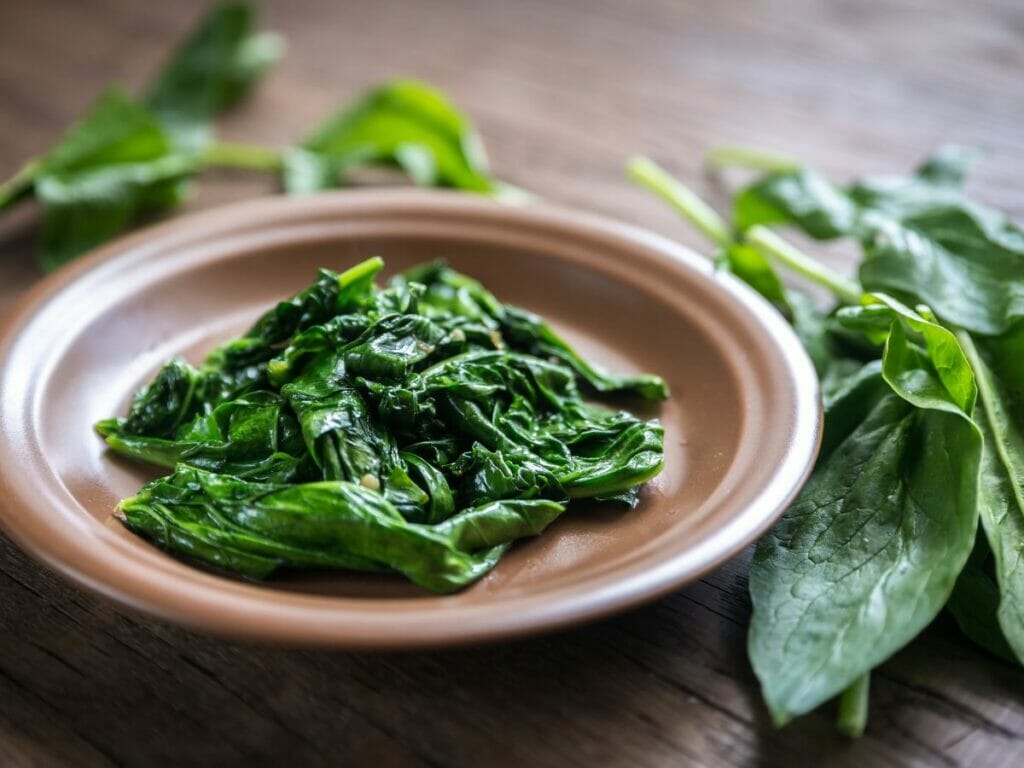
Spinach is another one of the great mushroom substitutes.
It’s healthy, earthy, and easy to have on hand.
Since it shrinks in cooked meals, spinach is a clever way to add bulk and nutrition to many different recipes without changing the initial flavor.
Try swapping sauteed mushrooms for sauteed spinach or tossing a few handfuls of spinach into the pan while cooking a hot meal.
Dark leafy greens are well-known for their health benefits, and spinach is no different.
It contains protein and iron and is dense in vitamins and minerals.
Who wouldn’t love a mushroom substitutes like this?
13. Zucchini
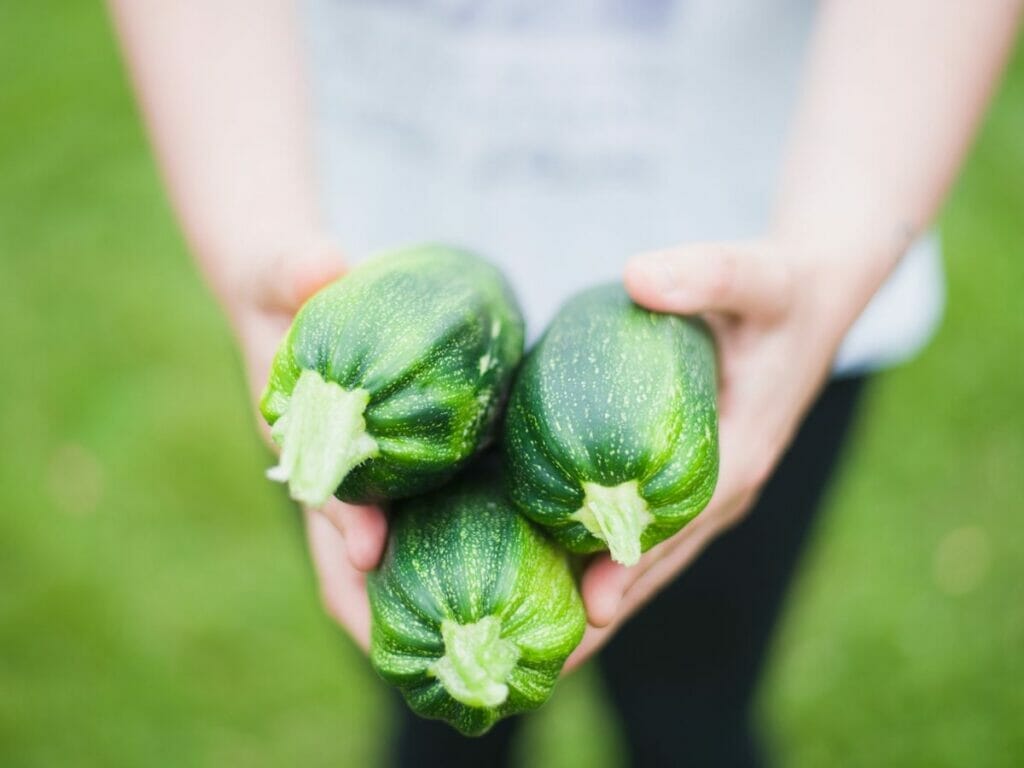
Like mushrooms, zucchini is a popular addition to a large variety of dishes as it can take on the recipe’s flavor.
Ensure your zucchini doesn’t go too watery when cooking in broth-based dishes.
It should have a soft texture, but you don’t want it to go too soft and lose its form.
Zucchini is packed with vitamins C, A, and folate while also being a terrific source of fiber that’s low in calories.
14. Bean curd skin
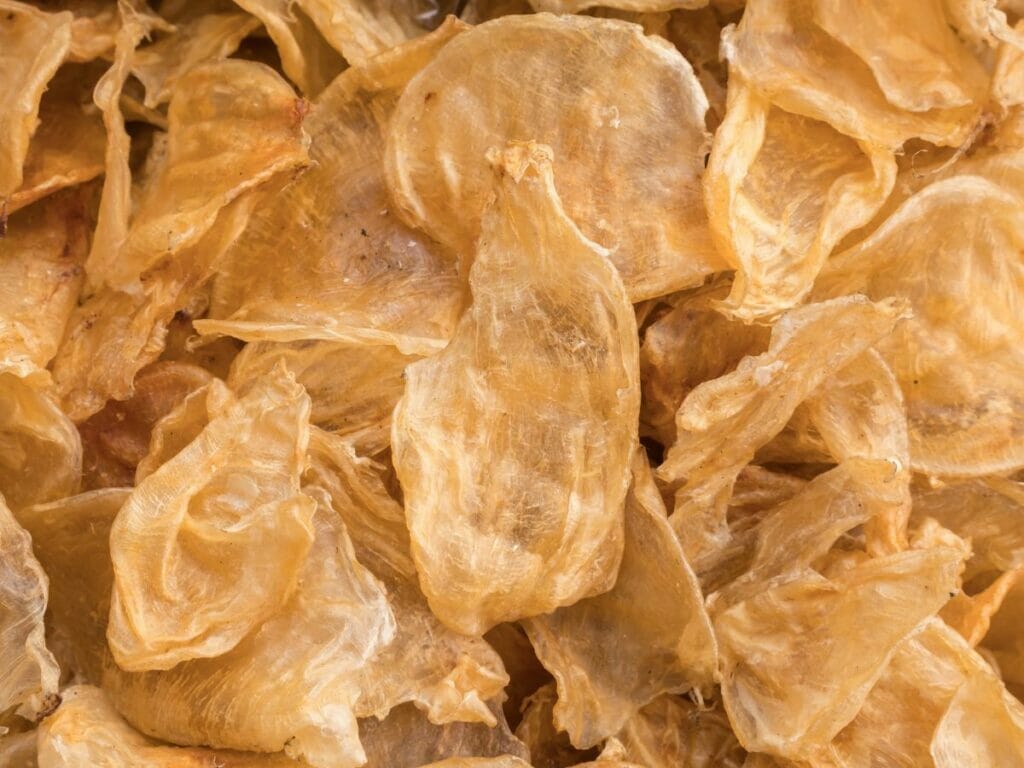
Bean curd sticks are the perfect solution if you need mushroom substitutes in Asian dishes.
Also known as bean threads or tofu skin, you can pick these up in most Asian supermarkets if you feel experimental in the kitchen.
Burn curd is mild, like tofu, but chewier.
It’s a popular staple in Chinese recipes and tastes great in Asian stews and casseroles, or try it stir-fried.
Bean curd sticks are a great option if you’re looking for a low-fat protein alternative.
It’s also a source of iron and calcium.
15. Dried or smoked tofu
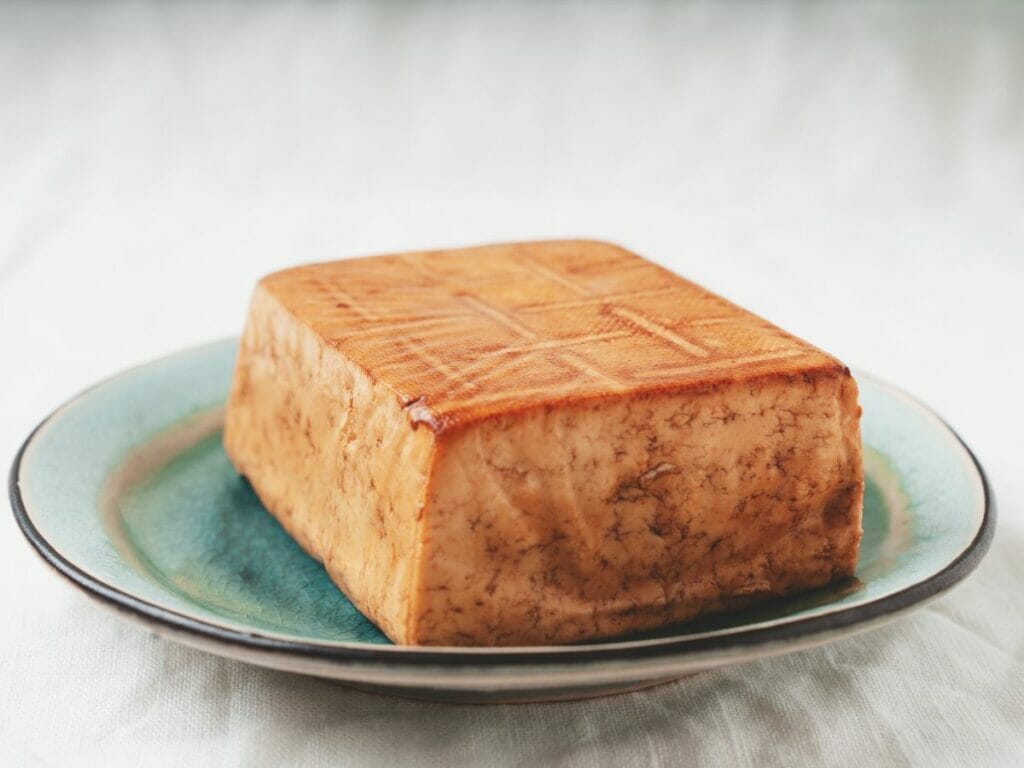
Packed with nutritional value and a staple in many parts of the world, tofu is an incredibly versatile ingredient.
It’s one of the best mushroom substitutes, and will take on the flavor of whatever seasonings and spices you use.
For most recipes, cook with extra firm tofu and avoid overcooking tofu, or it can fall apart.
Tofu works well in stir fries and many Asian dishes.
It can be marinated in advance or added to a wok to pick up the dish’s other flavors.
Like all soybean-based products, tofu is high in protein and iron, alongside many other vitamins and minerals.
16. Toasted pine nuts
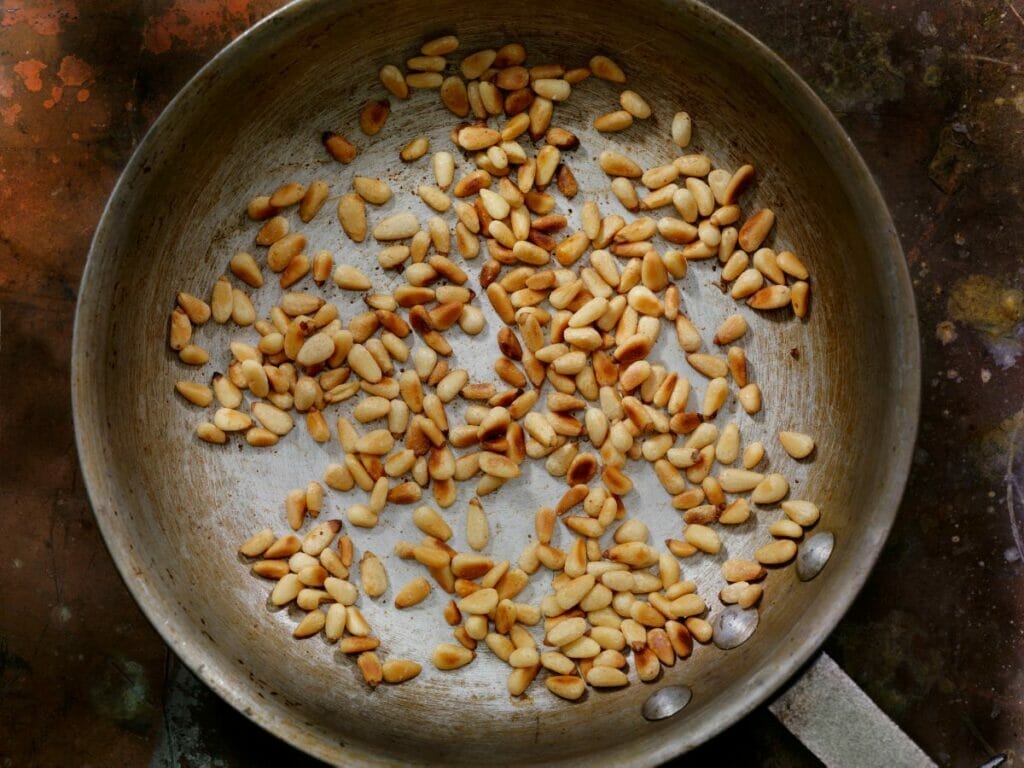
You may notice that pine nuts taste familiar in pasta dishes since they’re already a common ingredient in pesto.
Toasted pine nuts are delicious when used as a topping.
Sprinkle them on top of salads, side dishes, or pizza to add a little extra crunch and nutrition.
Pinenuts are high in vitamin E, alongside protein, iron, and magnesium.
Nuts are one of the best ways to add healthy fats to your diet.
17. Chestnuts
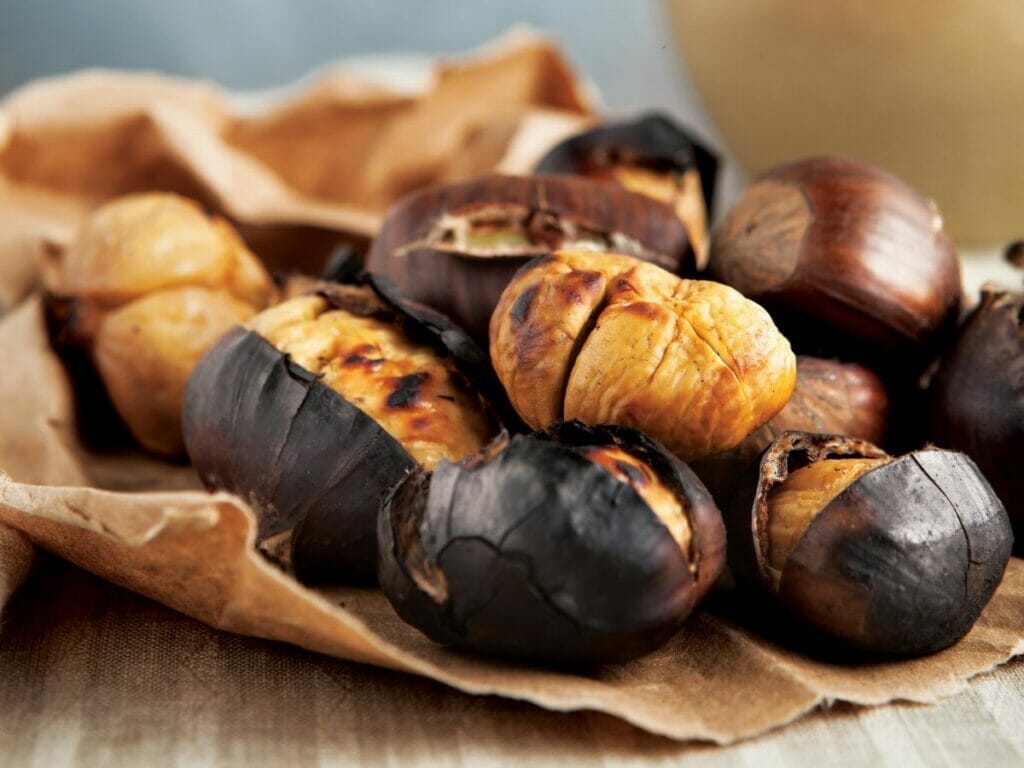
Chestnuts are an earthy ingredient with a sweeter flavor than some other nuts.
They are a surprisingly delicious addition to many recipes, so you can experiment with swapping out mushrooms and adding them to soups, pasta, or risotto.
Chestnuts are also a festive favorite, so they work well when used in nut roasts or even toasted for a fun snack.
These nuts are lower in fat than other nut varieties and contain vitamin C, potassium, and fiber, which makes it another great reason to add it to your mushroom substitutes list.
18. Sundried tomatoes
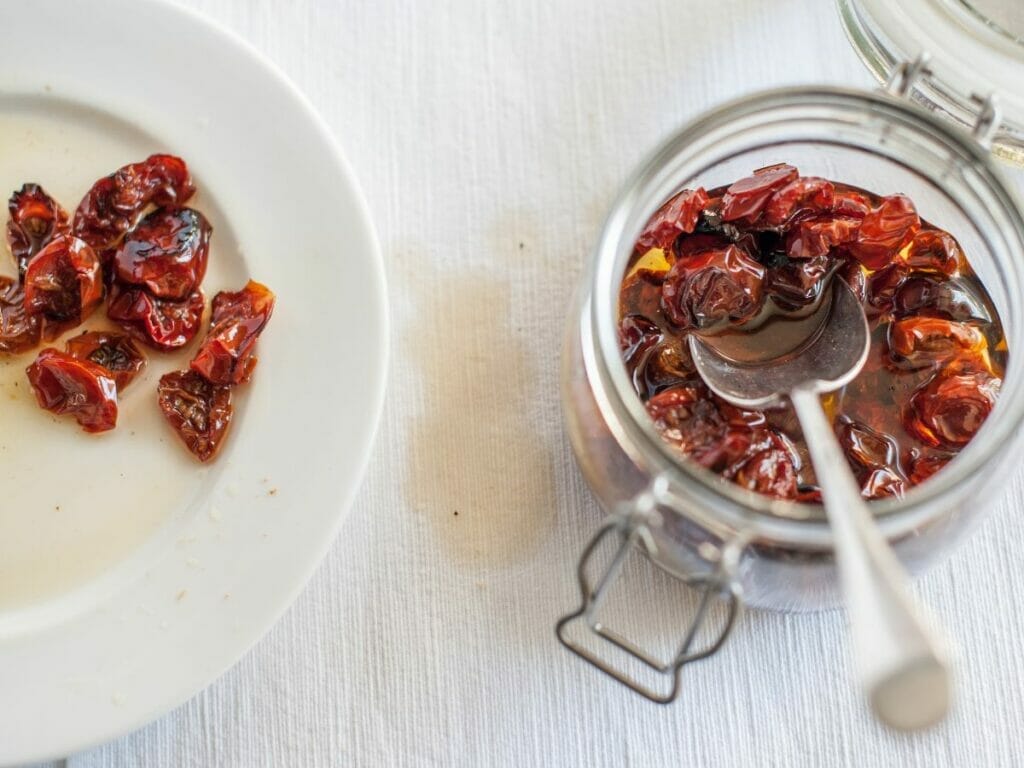
While less mind than mushrooms in flavor, chewy sundried tomatoes make them a surprisingly good sub when looking for a fleshy texture to your dish!
They’re a delicious addition to pasta, vegetable tray bakes, and many Mediterranean dishes.
They’re also incredibly sturdy, so they’re easy to add to many recipes without worrying they’ll lose their texture.
Sundried tomatoes are surprisingly high in protein and fiber while also containing iron, potassium, and vitamins K and B.
They’re also a yummy way to add more vitamins A and C into your diet and are packed with antioxidants.
19. Onions
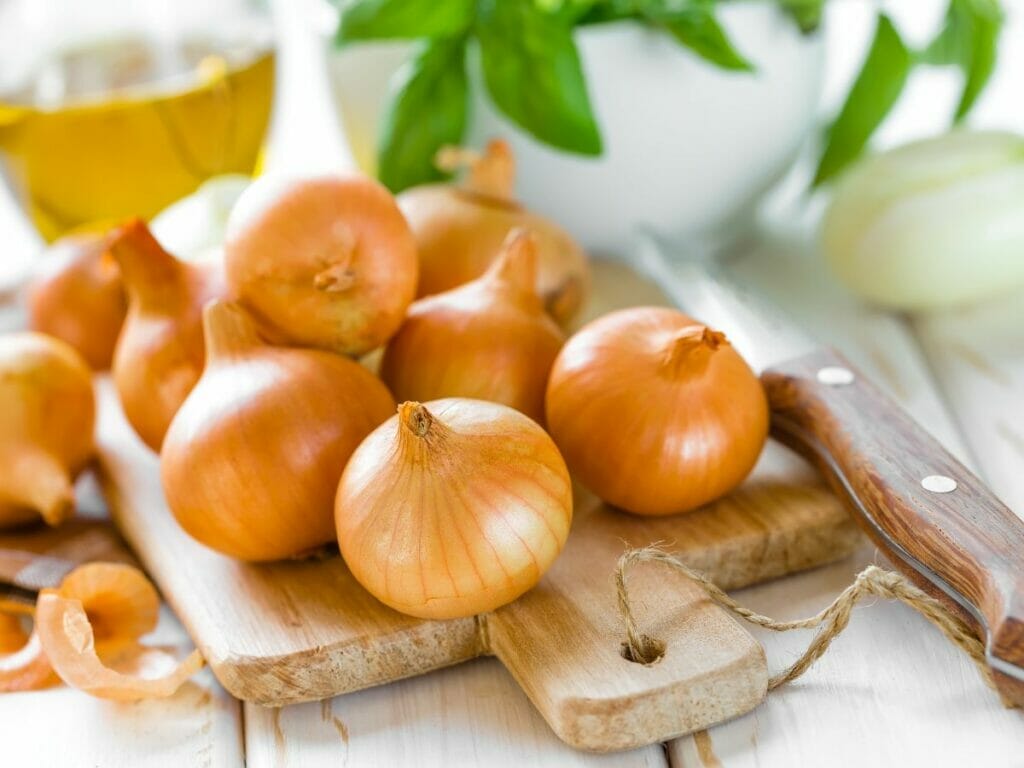
Onions are a staple of many dishes and works as one of the best mushroom substitutes.
They work well in almost any dish, from meat dishes to stews and pasta.
They’re also delicious fried and used as a topping for burgers or hot dogs.
Onions are another excellent source of that umami flavor distinctive in mushrooms, alongside asparagus, broccoli, and sundried tomatoes.
Flavorings with an umami flavor include soy sauce, miso paste, bouillon, and nutritional yeast.
These are all staples in vegan kitchens, though they may be utterly unfamiliar ingredients to others!
Suppose you’re craving that delicious umami flavor but don’t have mushrooms on hand or dislike mushrooms.
In that case, these are great items to have on hand to experiment with.
Hey! Want more expert food substitution guides? Check these out!
- 15 Best Cilantro Substitutes for the Perfect Swap
- 15 Genius Raclette Cheese Substitutes
- 19 Easy Chickpea Substitutes for the Perfect Swap
- 15 Best Substitutes for Rosemary to Save Your Meal
- 9 Best Substitutes for Beans to Save Your Meal
- 13 Best Substitutes for Brie
- 13 Best Substitutes for Barley
- 11 Best Bay Leaf Replacements
- 15 Best Substitutions for Grapefruit
